| View previous topic :: View next topic |
| Author |
Message |
kds315*


Joined: 12 Mar 2008
Posts: 16664
Location: Weinheim, Germany
Expire: 2021-03-09
|
 Posted: Mon Jun 29, 2009 6:31 am Post subject: Relay Lens System to adapt short back focal lenses Posted: Mon Jun 29, 2009 6:31 am Post subject: Relay Lens System to adapt short back focal lenses |
 |
|
kds315* wrote:
There has been a question if and how lenses with short or very short back focal length may be adapted to a camera. For instance c-mount or cine lenses to a DSLR.
Of course there is a way to get c-mount lenses to work on a camera with a larger back focal register and a larger sensor than the c-mount lens will fill - just not a very obvious and not that easy solution: a relay lens system. This is a well known method from microscopy and other science areas, whenever a small image needs to be enlarged to fit the sensor of a camera etc.
I made a few experiments myself, since I wanted to adapt a wide angle CCTV lens (140 degrees, 4.8mm focal length in my case) onto my camera. I'm still experimenting, but one solution was to use an older microscope objective as relay lens which takes the aerial image of the CCTV lens, magnifies it up by about a factor of three (3x) and projects that image to the camera sensor. [that has to be modified according to the image circle of that lens which ones wants to adapt and the sensor size of the camera to be filled]
One side effect is that the image is upside down of course. Using that principle, quite some strange lenses can be coupled to a camera or sensor system, nothing really new. The problem ist to find a suitable good enough front lens, since sharpness, contrast and CA are always a problem and a suitable high quality relay lens (for that a good special macro lens is always a very good solution like a low mag. microscope lens or the Zeiss Luminar, leitz Photar, Nikon Macro Nikkor series of special macro lenses).
Only the front lens should be stepped down btw., the relay lens has to be wide open to avoid severe vignetting (you will anyway run into that problem soon, since it is very common with most lens combinations - don't be frustrated about this). One method to overcome that is to enlarge only the center of the image of the front lens (by using a higher magnification of the relay lens), so as to achieve a better image quality, but at the cost of losing some FOV (view angle).
Here one iterim result which is far away from being accetable and it is uncropped to show the effect of vignetting, CA etc.:

and here a later stage using the same front CCTV lens, but a somewhat better relay lens:
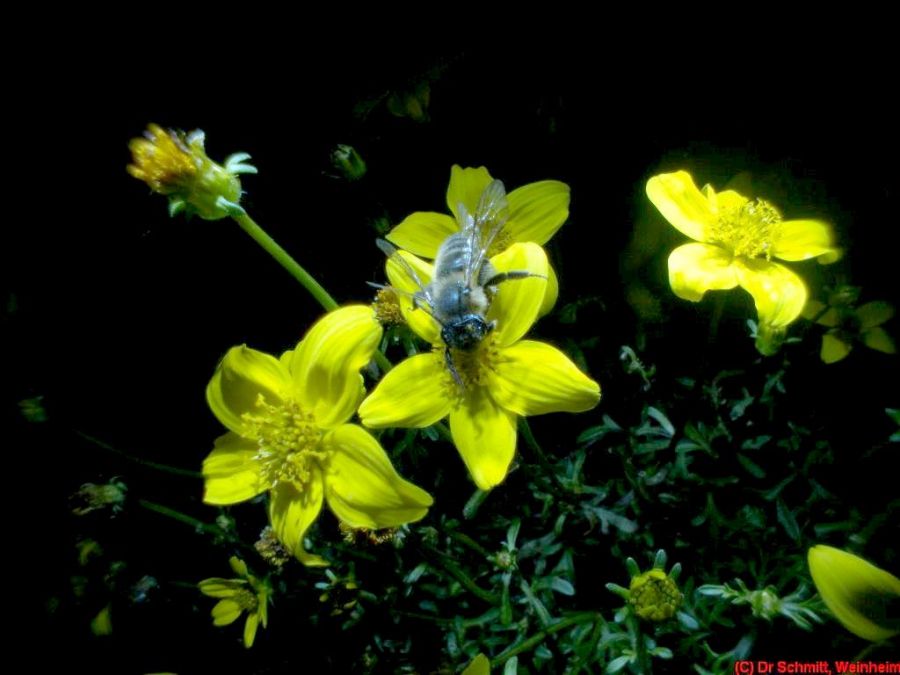
Since that is quite some mechanical effort, a simpler method (yet with not so good image quality usually) is to use a reversed wide angle lens as relay lenses, a tube of appropriate length to attach the CCTV lens in front, like what has been done here (both images (c) Jukka Lehtonen, Finland)
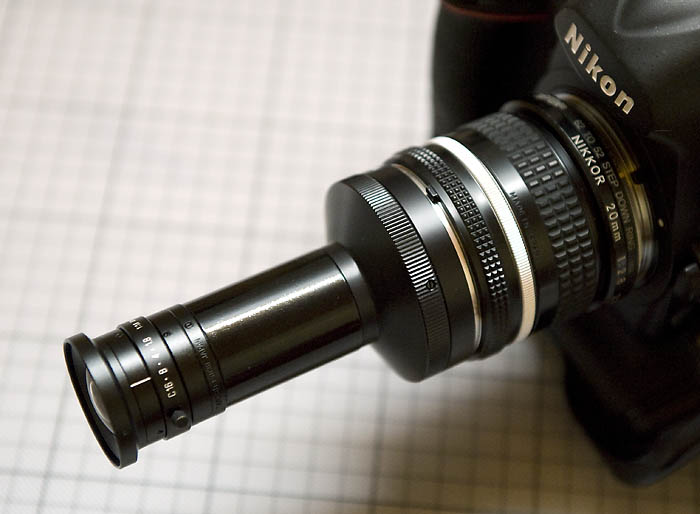
to achieve a result like that:
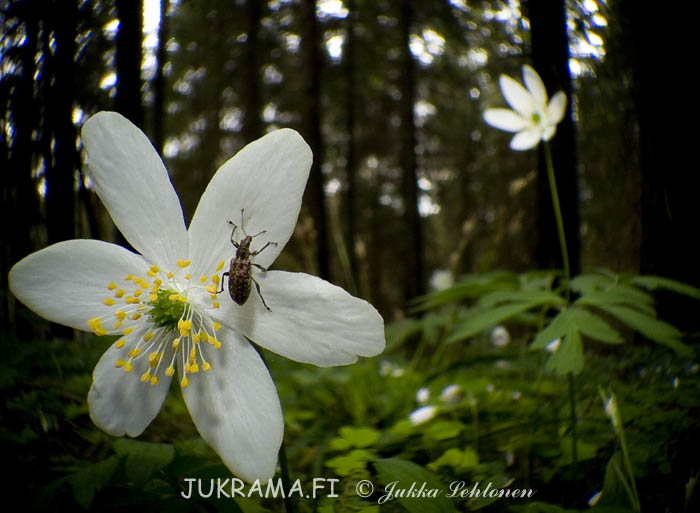
Bjorn Rorslett has done that too here, to press a special fisheye lens into action:
http://www.naturfotograf.com/D1_fisheye_1,html.htm
This relay lens procedure is a well know method in filming when a large FOV and deep DOF is required (spare me to elaborate on the optics details here). One of the most discussed ones is the Panasonic FRAZIER lens having quite unique properties (google it if you like).
_________________
Klaus - Admin
"S'il vient a point, me souviendra" [Thomas Bohier (1460-1523)]
http://www.macrolenses.de for macro and special lens info
http://www.pbase.com/kds315/uv_photos for UV Images and lens/filter info
https://www.flickr.com/photos/kds315/albums my albums using various lenses
http://photographyoftheinvisibleworld.blogspot.com/ my UV BLOG
http://www.travelmeetsfood.com/blog Food + Travel BLOG
https://galeriafotografia.com Architecture + Drone photography
Currently most FAV lens(es):
X80QF f3.2/80mm
Hypergon f11/26mm
ELCAN UV f5.6/52mm
Zeiss UV-Planar f4/60mm
Zeiss UV-Planar f2/62mm
Lomo Уфар-12 f2.5/41mm
Lomo Зуфар-2 f4.0/350mm
Lomo ZIKAR-1A f1.2/100mm
Nikon UV Nikkor f4.5/105mm
Zeiss UV-Sonnar f4.3/105mm
CERCO UV-VIS-NIR f1.8/45mm
CERCO UV-VIS-NIR f4.1/94mm
CERCO UV-VIS-NIR f2.8/100mm
Steinheil Quarzobjektiv f1.8/50mm
Pentax Quartz Takumar f3.5/85mm
Carl Zeiss Jena UV-Objektiv f4/60mm
NYE OPTICAL Lyman-Alpha II f1.1/90mm
NYE OPTICAL Lyman-Alpha I f2.8/200mm
COASTAL OPTICS f4/60mm UV-VIS-IR Apo
COASTAL OPTICS f4.5/105mm UV-Micro-Apo
Pentax Ultra-Achromatic Takumar f4.5/85mm
Pentax Ultra-Achromatic Takumar f5.6/300mm
Rodenstock UV-Rodagon f5.6/60mm + 105mm + 150mm
|
|
| Back to top |
|
 |
ChrisLilley


Joined: 01 Jan 2008
Posts: 1767
Location: Nice, France
|
 Posted: Mon Jun 29, 2009 8:52 am Post subject: Posted: Mon Jun 29, 2009 8:52 am Post subject: |
 |
|
ChrisLilley wrote:
I had earlier read Bjørn's article where he mentioned relay lenses, but without understanding what they are.
So, they take a part of the image circle and magnify it. In what way is a relay lens different to a teleconverter, which also does this?
_________________
Camera (ˈkæ mə rə), n. Device for taking pictures in bright light
There are 10 kinds of people in the world: those who understand binary, and those who don’t. Key: Ai-P, Ai, Ai'ed, AiS
Camera: Nikon D90, D40, DK-21M eyepiece, ML-3 remote MF lenses: Nikkor 20mm f/4 K, AI'ed | N.K. Nikkor-N 24mm f/2.8 | Nikkor-N.C 24mm f/2.8 | Nikkor 28mm f/2.8 AiS late model | Арсенал (Arsenal) Мир-24Н (Mir-24N) 35mm f/2 | Cosina Voigtländer Ultron SL II 40mm f/2.0 | Micro-Nikkor 55mm f/2.8 AiS | Zoom-Nikkor 80-200 f/4.5 Ai | ЛЗОС (LZOS) Юпитер-9 (Jupiter-9) 85mm f/2 | Cosina Voigtländer APO-Lanthar 90mm f/3.5 SL | Nikkor-P 105mm f/2.5 pre-Ai, Ai'ed | Micro-Nikkor 105mm f/4 | Schneider Kreuznach Componon 105mm f/5.6 | Nikkor 135mm f/2.8, Ai'ed 1976 model | Nikkor 180mm f/2.8 ED AiS | Арсенал (Arsenal) ТЕЛЕАР-Н (Telear-n) 200mm f/3.5 | Nikkor 300 mm f/4.5 Ai (full equipment list) |
|
| Back to top |
|
 |
kds315*


Joined: 12 Mar 2008
Posts: 16664
Location: Weinheim, Germany
Expire: 2021-03-09
|
 Posted: Mon Jun 29, 2009 1:36 pm Post subject: Posted: Mon Jun 29, 2009 1:36 pm Post subject: |
 |
|
kds315* wrote:
No, that is sth completely different, since no auxiliary (aerial) image is being formed, thus no reversal of the image.
http://books.google.com/books?id=CU7-2ZLGFpYC&pg=PA434&lpg=PA434&dq=relay+lens+system+teleconverter&source=bl&ots=d8xPzKVucu&sig=yu8Kp6V1UKUzShY__UdGalG6zHk&hl=de&ei=t8JISoz_LtWOsAbX3rzXCQ&sa=X&oi=book_result&ct=result&resnum=3
_________________
Klaus - Admin
"S'il vient a point, me souviendra" [Thomas Bohier (1460-1523)]
http://www.macrolenses.de for macro and special lens info
http://www.pbase.com/kds315/uv_photos for UV Images and lens/filter info
https://www.flickr.com/photos/kds315/albums my albums using various lenses
http://photographyoftheinvisibleworld.blogspot.com/ my UV BLOG
http://www.travelmeetsfood.com/blog Food + Travel BLOG
https://galeriafotografia.com Architecture + Drone photography
Currently most FAV lens(es):
X80QF f3.2/80mm
Hypergon f11/26mm
ELCAN UV f5.6/52mm
Zeiss UV-Planar f4/60mm
Zeiss UV-Planar f2/62mm
Lomo Уфар-12 f2.5/41mm
Lomo Зуфар-2 f4.0/350mm
Lomo ZIKAR-1A f1.2/100mm
Nikon UV Nikkor f4.5/105mm
Zeiss UV-Sonnar f4.3/105mm
CERCO UV-VIS-NIR f1.8/45mm
CERCO UV-VIS-NIR f4.1/94mm
CERCO UV-VIS-NIR f2.8/100mm
Steinheil Quarzobjektiv f1.8/50mm
Pentax Quartz Takumar f3.5/85mm
Carl Zeiss Jena UV-Objektiv f4/60mm
NYE OPTICAL Lyman-Alpha II f1.1/90mm
NYE OPTICAL Lyman-Alpha I f2.8/200mm
COASTAL OPTICS f4/60mm UV-VIS-IR Apo
COASTAL OPTICS f4.5/105mm UV-Micro-Apo
Pentax Ultra-Achromatic Takumar f4.5/85mm
Pentax Ultra-Achromatic Takumar f5.6/300mm
Rodenstock UV-Rodagon f5.6/60mm + 105mm + 150mm
|
|
| Back to top |
|
 |
dickb

Joined: 04 Apr 2008
Posts: 821
|
 Posted: Tue Jun 30, 2009 1:48 pm Post subject: Posted: Tue Jun 30, 2009 1:48 pm Post subject: |
 |
|
dickb wrote:
I've tried something similar with a Zunow 6.5mm f/1.4 D-mount lens and a range of auxilliary lenses. Fun to do, but very unwieldy - long lens/extension ring/bellows combinations, reversed image, extremely short working distance. Try getting light onto your subject when it's touching the recessed front lens..
Still, for macro photos with the subject and a large recognisable landscape (almost) in focus it works. Maybe a small sensor compact digital camera would get you the same/similar results with much less hassle. Is there a particular reason why you want to use a DSLR Klaus? I know it's much more fun of course to do it the hard way..
Maybe a 4.5mm Sigma fisheye defished would get similar results. |
|
| Back to top |
|
 |
kds315*


Joined: 12 Mar 2008
Posts: 16664
Location: Weinheim, Germany
Expire: 2021-03-09
|
 Posted: Tue Jun 30, 2009 3:29 pm Post subject: Posted: Tue Jun 30, 2009 3:29 pm Post subject: |
 |
|
kds315* wrote:
Well yes Dick, you "caught me" - I like challenges a lot!!
_________________
Klaus - Admin
"S'il vient a point, me souviendra" [Thomas Bohier (1460-1523)]
http://www.macrolenses.de for macro and special lens info
http://www.pbase.com/kds315/uv_photos for UV Images and lens/filter info
https://www.flickr.com/photos/kds315/albums my albums using various lenses
http://photographyoftheinvisibleworld.blogspot.com/ my UV BLOG
http://www.travelmeetsfood.com/blog Food + Travel BLOG
https://galeriafotografia.com Architecture + Drone photography
Currently most FAV lens(es):
X80QF f3.2/80mm
Hypergon f11/26mm
ELCAN UV f5.6/52mm
Zeiss UV-Planar f4/60mm
Zeiss UV-Planar f2/62mm
Lomo Уфар-12 f2.5/41mm
Lomo Зуфар-2 f4.0/350mm
Lomo ZIKAR-1A f1.2/100mm
Nikon UV Nikkor f4.5/105mm
Zeiss UV-Sonnar f4.3/105mm
CERCO UV-VIS-NIR f1.8/45mm
CERCO UV-VIS-NIR f4.1/94mm
CERCO UV-VIS-NIR f2.8/100mm
Steinheil Quarzobjektiv f1.8/50mm
Pentax Quartz Takumar f3.5/85mm
Carl Zeiss Jena UV-Objektiv f4/60mm
NYE OPTICAL Lyman-Alpha II f1.1/90mm
NYE OPTICAL Lyman-Alpha I f2.8/200mm
COASTAL OPTICS f4/60mm UV-VIS-IR Apo
COASTAL OPTICS f4.5/105mm UV-Micro-Apo
Pentax Ultra-Achromatic Takumar f4.5/85mm
Pentax Ultra-Achromatic Takumar f5.6/300mm
Rodenstock UV-Rodagon f5.6/60mm + 105mm + 150mm
|
|
| Back to top |
|
 |
luisalegria


Joined: 07 Mar 2008
Posts: 6602
Location: San Francisco, USA
Expire: 2018-01-18
|
 Posted: Tue Jun 30, 2009 4:06 pm Post subject: Posted: Tue Jun 30, 2009 4:06 pm Post subject: |
 |
|
luisalegria wrote:
Very interesting -
Please correct me if I'm wrong -
So Mr. Lehtonens rig is, from the camera -
reverse adapter-
wide-angle lens reversed-
C-mount adpater for Nikon-
C-female-to C female tube -
C-mount lens
Correct ?
If this works with good quality there are many very wide-angle C-mount lenses to try, not to speak of other odd optics like telecentric lenses.
I think C-to-C tubes are in stock from Edmund Optics.
_________________
I like Pentax DSLR's, Exaktas, M42 bodies of all kinds, strange and cheap Japanese lenses, and am dabbling in medium format/Speed Graphic work. |
|
| Back to top |
|
 |
kds315*


Joined: 12 Mar 2008
Posts: 16664
Location: Weinheim, Germany
Expire: 2021-03-09
|
 Posted: Tue Jun 30, 2009 4:42 pm Post subject: Posted: Tue Jun 30, 2009 4:42 pm Post subject: |
 |
|
kds315* wrote:
| luisalegria wrote: |
Very interesting -
Please correct me if I'm wrong -
So Mr. Lehtonens rig is, from the camera -
reverse adapter-
wide-angle lens reversed-
C-mount adpater for Nikon-
C-female-to C female tube -
C-mount lens
Correct ?
If this works with good quality there are many very wide-angle C-mount lenses to try, not to speak of other odd optics like telecentric lenses.
I think C-to-C tubes are in stock from Edmund Optics. |
Yes, fully correct. You're also correct about the many other lenses available. The quality is certainly an issue, so don't expect miracles there....
_________________
Klaus - Admin
"S'il vient a point, me souviendra" [Thomas Bohier (1460-1523)]
http://www.macrolenses.de for macro and special lens info
http://www.pbase.com/kds315/uv_photos for UV Images and lens/filter info
https://www.flickr.com/photos/kds315/albums my albums using various lenses
http://photographyoftheinvisibleworld.blogspot.com/ my UV BLOG
http://www.travelmeetsfood.com/blog Food + Travel BLOG
https://galeriafotografia.com Architecture + Drone photography
Currently most FAV lens(es):
X80QF f3.2/80mm
Hypergon f11/26mm
ELCAN UV f5.6/52mm
Zeiss UV-Planar f4/60mm
Zeiss UV-Planar f2/62mm
Lomo Уфар-12 f2.5/41mm
Lomo Зуфар-2 f4.0/350mm
Lomo ZIKAR-1A f1.2/100mm
Nikon UV Nikkor f4.5/105mm
Zeiss UV-Sonnar f4.3/105mm
CERCO UV-VIS-NIR f1.8/45mm
CERCO UV-VIS-NIR f4.1/94mm
CERCO UV-VIS-NIR f2.8/100mm
Steinheil Quarzobjektiv f1.8/50mm
Pentax Quartz Takumar f3.5/85mm
Carl Zeiss Jena UV-Objektiv f4/60mm
NYE OPTICAL Lyman-Alpha II f1.1/90mm
NYE OPTICAL Lyman-Alpha I f2.8/200mm
COASTAL OPTICS f4/60mm UV-VIS-IR Apo
COASTAL OPTICS f4.5/105mm UV-Micro-Apo
Pentax Ultra-Achromatic Takumar f4.5/85mm
Pentax Ultra-Achromatic Takumar f5.6/300mm
Rodenstock UV-Rodagon f5.6/60mm + 105mm + 150mm
|
|
| Back to top |
|
 |
dickb

Joined: 04 Apr 2008
Posts: 821
|
 Posted: Tue Jun 30, 2009 5:40 pm Post subject: Posted: Tue Jun 30, 2009 5:40 pm Post subject: |
 |
|
dickb wrote:
Hi Klaus,
A few examples of my experiments two years ago:
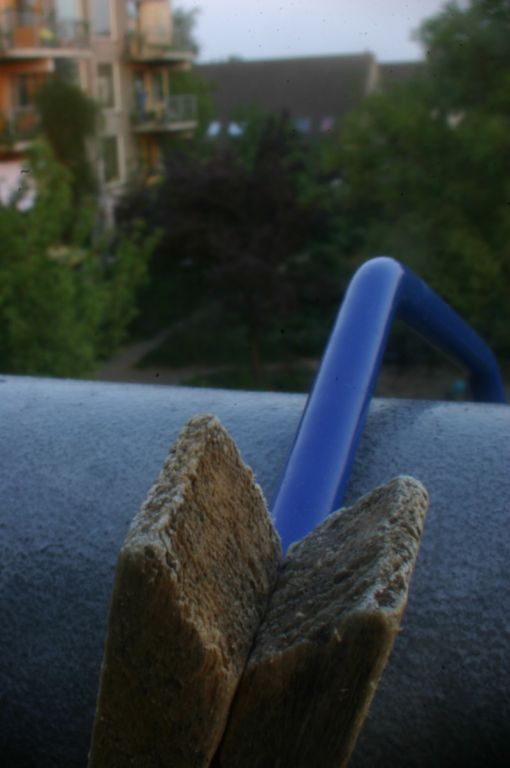
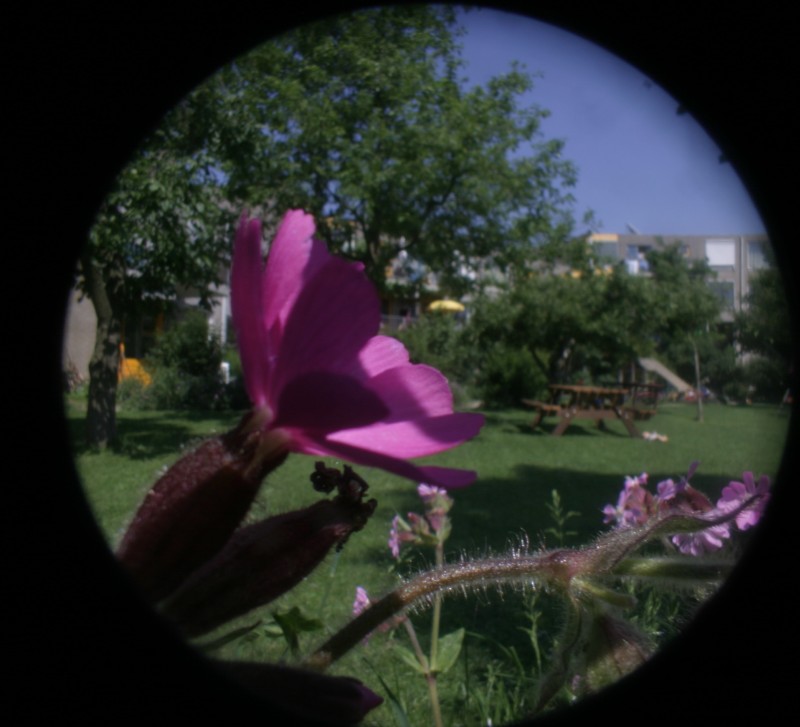
The block of wood in the first picture is a clothes peg, about 1 cm wide.
Both are the 6.5mm f/1.4 Zunow. I'm not 100% sure which relay lens I used for these - a Luminar 16mm, a 24mm Minolta reversed or my 45mm f/1.0 S-Planar.
Stopping the relay lens down makes a big difference in DoF and image circle size. |
|
| Back to top |
|
 |
kds315*


Joined: 12 Mar 2008
Posts: 16664
Location: Weinheim, Germany
Expire: 2021-03-09
|
 Posted: Wed Jul 01, 2009 10:36 am Post subject: Posted: Wed Jul 01, 2009 10:36 am Post subject: |
 |
|
kds315* wrote:
Thanks Dick, this is quite similar to teh results I get (got). The Zunow is a 8mm cine lens?
_________________
Klaus - Admin
"S'il vient a point, me souviendra" [Thomas Bohier (1460-1523)]
http://www.macrolenses.de for macro and special lens info
http://www.pbase.com/kds315/uv_photos for UV Images and lens/filter info
https://www.flickr.com/photos/kds315/albums my albums using various lenses
http://photographyoftheinvisibleworld.blogspot.com/ my UV BLOG
http://www.travelmeetsfood.com/blog Food + Travel BLOG
https://galeriafotografia.com Architecture + Drone photography
Currently most FAV lens(es):
X80QF f3.2/80mm
Hypergon f11/26mm
ELCAN UV f5.6/52mm
Zeiss UV-Planar f4/60mm
Zeiss UV-Planar f2/62mm
Lomo Уфар-12 f2.5/41mm
Lomo Зуфар-2 f4.0/350mm
Lomo ZIKAR-1A f1.2/100mm
Nikon UV Nikkor f4.5/105mm
Zeiss UV-Sonnar f4.3/105mm
CERCO UV-VIS-NIR f1.8/45mm
CERCO UV-VIS-NIR f4.1/94mm
CERCO UV-VIS-NIR f2.8/100mm
Steinheil Quarzobjektiv f1.8/50mm
Pentax Quartz Takumar f3.5/85mm
Carl Zeiss Jena UV-Objektiv f4/60mm
NYE OPTICAL Lyman-Alpha II f1.1/90mm
NYE OPTICAL Lyman-Alpha I f2.8/200mm
COASTAL OPTICS f4/60mm UV-VIS-IR Apo
COASTAL OPTICS f4.5/105mm UV-Micro-Apo
Pentax Ultra-Achromatic Takumar f4.5/85mm
Pentax Ultra-Achromatic Takumar f5.6/300mm
Rodenstock UV-Rodagon f5.6/60mm + 105mm + 150mm
|
|
| Back to top |
|
 |
dickb

Joined: 04 Apr 2008
Posts: 821
|
 Posted: Wed Jul 01, 2009 10:52 am Post subject: Posted: Wed Jul 01, 2009 10:52 am Post subject: |
 |
|
dickb wrote:
You're welcome. It's a D-mount cine lens from a Yashica 8mm camera with a turret for three lenses. It has a recessed front lens, unpractical for lighting extreme close ups. I also have a Yashinon 6.5/1.4, similar, but with a less recessed front lens.
From memory, the best setup was the Yashinon with a 19/2.8 Macro-Nikkor as relay lens. |
|
| Back to top |
|
 |
kds315*


Joined: 12 Mar 2008
Posts: 16664
Location: Weinheim, Germany
Expire: 2021-03-09
|
 Posted: Wed Jul 01, 2009 1:35 pm Post subject: Posted: Wed Jul 01, 2009 1:35 pm Post subject: |
 |
|
kds315* wrote:
Thanks Dick! I just got a Biotar 2/12.5mm from a nice guy here, image circle is very small, need to try a 19mm Macro Nikkor or 16mm Luminar - we'll see.
_________________
Klaus - Admin
"S'il vient a point, me souviendra" [Thomas Bohier (1460-1523)]
http://www.macrolenses.de for macro and special lens info
http://www.pbase.com/kds315/uv_photos for UV Images and lens/filter info
https://www.flickr.com/photos/kds315/albums my albums using various lenses
http://photographyoftheinvisibleworld.blogspot.com/ my UV BLOG
http://www.travelmeetsfood.com/blog Food + Travel BLOG
https://galeriafotografia.com Architecture + Drone photography
Currently most FAV lens(es):
X80QF f3.2/80mm
Hypergon f11/26mm
ELCAN UV f5.6/52mm
Zeiss UV-Planar f4/60mm
Zeiss UV-Planar f2/62mm
Lomo Уфар-12 f2.5/41mm
Lomo Зуфар-2 f4.0/350mm
Lomo ZIKAR-1A f1.2/100mm
Nikon UV Nikkor f4.5/105mm
Zeiss UV-Sonnar f4.3/105mm
CERCO UV-VIS-NIR f1.8/45mm
CERCO UV-VIS-NIR f4.1/94mm
CERCO UV-VIS-NIR f2.8/100mm
Steinheil Quarzobjektiv f1.8/50mm
Pentax Quartz Takumar f3.5/85mm
Carl Zeiss Jena UV-Objektiv f4/60mm
NYE OPTICAL Lyman-Alpha II f1.1/90mm
NYE OPTICAL Lyman-Alpha I f2.8/200mm
COASTAL OPTICS f4/60mm UV-VIS-IR Apo
COASTAL OPTICS f4.5/105mm UV-Micro-Apo
Pentax Ultra-Achromatic Takumar f4.5/85mm
Pentax Ultra-Achromatic Takumar f5.6/300mm
Rodenstock UV-Rodagon f5.6/60mm + 105mm + 150mm
|
|
| Back to top |
|
 |
dickb

Joined: 04 Apr 2008
Posts: 821
|
 Posted: Wed Jul 01, 2009 9:15 pm Post subject: Posted: Wed Jul 01, 2009 9:15 pm Post subject: |
 |
|
dickb wrote:
This thread got me to try this again, with the Yashinon 6.5mm 1.4 this time. The weak link in my setup is my homemade d-mount/m42 adapter - easy to decenter the cine lens and too many reflections. For this picture I used a reversed 18-55. The reason for using this rather than a macro-nikkor 19/2.8 is ease of use. Unlike Klaus's assertion in the first post I find that closing the aperture of the cine lens beyond f/2 decreases the image circle, whereas stopping down the relay lens has no detrimental effect on the image circle. Using a reversed 18-55 gives me an automatic aperture and therefore a much brighter viewfinder. Plus, zooming in or out you can switch between a full circle image or a crop.
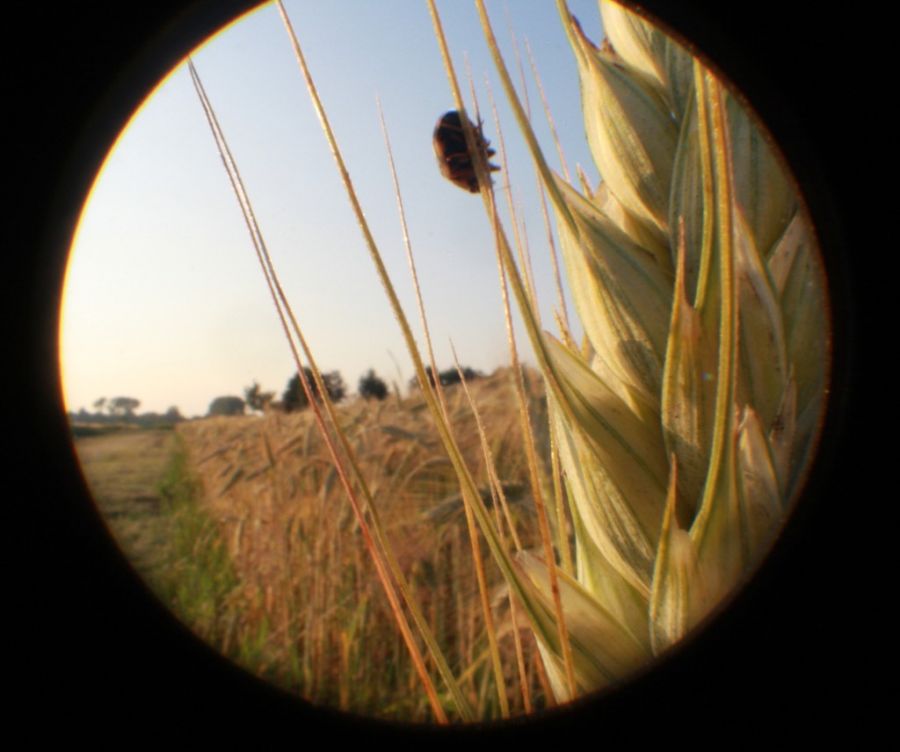
Chasing bugs with this combination is a bit of a challenge, as the subject just about touches the front lens. Cleaning the front lens is a good idea as well, since any speck will be in focus as well.
BTW Klaus, is a 12.5mm lens wide enough for your needs? I thought you wanted a shorter focal length for a steeper perspective. |
|
| Back to top |
|
 |
poncho_morales


Joined: 25 Oct 2008
Posts: 162
Location: Helsinki, Finland
Expire: 2013-02-21
|
 Posted: Thu Jul 02, 2009 11:51 am Post subject: Posted: Thu Jul 02, 2009 11:51 am Post subject: |
 |
|
poncho_morales wrote:
Wow this is amazing! thanks for sharing
_________________
EOS 1Ds mark 2, Super Multi Coated Takumar 3.5/35mm and 1.4/50mm, Carl Zeiss Distagon 1.4/35mm, Olympus Zuiko 2/40mm, Olympus Zuiko 2/90mm, Minolta Rokkor 1.2/58mm, Canon 2.8/300mm ssc fluorite |
|
| Back to top |
|
 |
dickb

Joined: 04 Apr 2008
Posts: 821
|
 Posted: Fri Jul 03, 2009 11:57 am Post subject: Posted: Fri Jul 03, 2009 11:57 am Post subject: |
 |
|
dickb wrote:
Just two more examples:
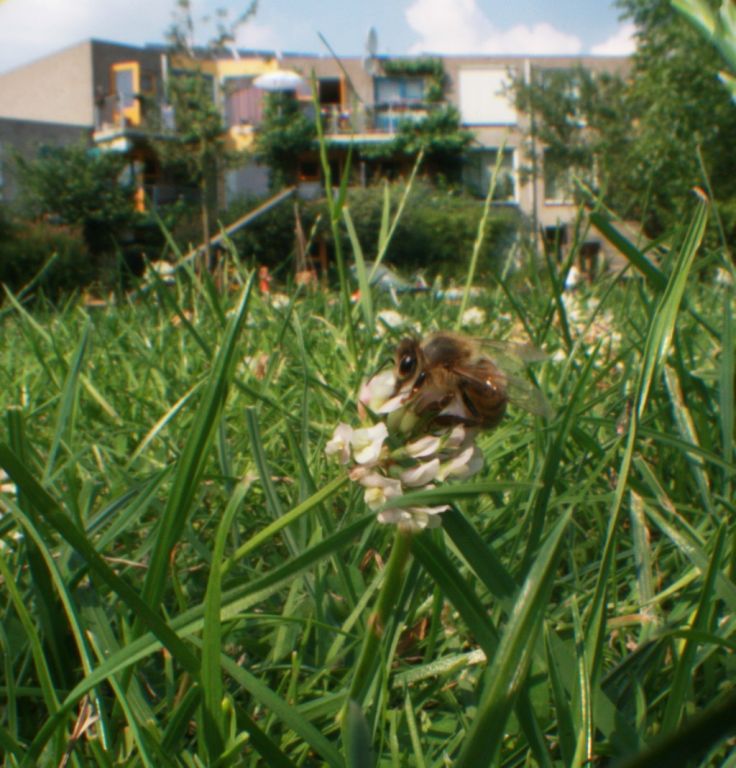
Yashinon 6.5mm f/1.4, reversed 18-55IS
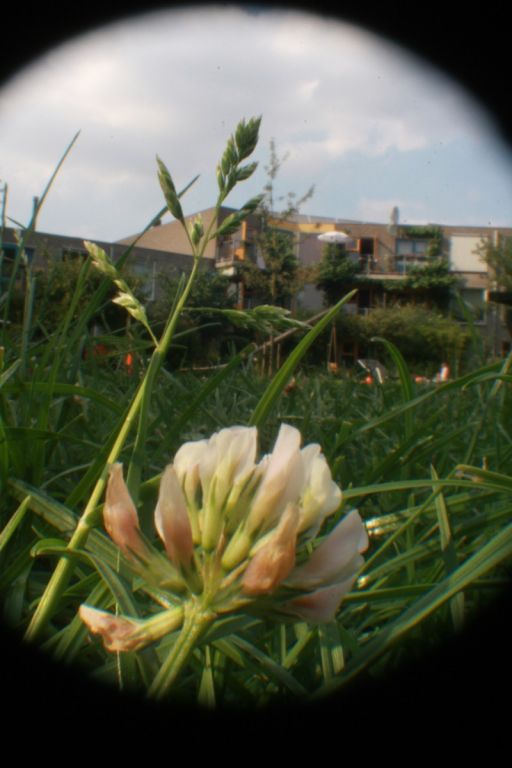
Yashinon 6.5mm f/1.4, macro-nikkor 19/2.8
What helps for these photos are insects that aren't at all camera shy and a lot of light. A considerable amount of patience is also useful since focussing is tricky, with the dark viewfinder. Liveview works to a degree, but is not that easy to use upside down with moving bees. |
|
| Back to top |
|
 |
|
|
|
You cannot post new topics in this forum
You cannot reply to topics in this forum
You cannot edit your posts in this forum
You cannot delete your posts in this forum
You cannot vote in polls in this forum
|
